Contents
General
MARC
Adult vs. Juvenile
- When deciding whether to catalogue a title as Adult or Juvenile/Teen, examine the intellectual content of the title and make decision regardless of location and fund. Juvenile material is suitable for children up to and including 16 years of age.
- The Academic Edge (publisher: Academic Edge) and Key study guides (publisher: Castle Rock Research Corp.) are classed as juvenile if for grades 1-6; titles for grades 7-12 are classed as adult.
- Catalogue all material (print and non-print) according to the intellectual level of the title. Item level call no. should be the same as the title record call no. Queries about the designation of a specific title should be investigated by Cataloguing & Processing staff (i.e. recall item).
Audience level: E
- Audience fixed field = j
- The E classification of book material includes fiction, fiction containing a minor amount of factual information and simple concept books. Picture books for children reading at the pre-school and grades 1 - 4 level (up to and including age 9) are classified as E.
- Oversize exception: E books are an exception to the oversize rules for “Books”, there are no OVERSIZE E picture books, i.e. the Home Location for most E books is JUVPIC not OVERSIZE, see also Home location hierarchy for juvenile books.
Criteria:
- Picture book
- Profusely illustrated
- Illustrations complement text
- Text ranges from wordless to balanced amount of text and illustrations; wordless books are classed as E rather than J.
- Typically 48 pages or fewer
- Generally larger or smaller in size than standard book format
- Includes very simple non-fiction books with limited text (topics may include: colours, counting, shapes, simple arithmetic, size, weight, etc.). Factual content is insufficient for a child to write a report. See also Concept Books.
- Formerly included some fairytales, nursery rhymes and poetry, classified using Dewey; now classed in J. See E Fairytales.
- Beginning readers series (fiction) are classified as E; includes simple chapter books for children 9 years and younger
- Texts of single songs are usually classified as E; may include the music on a separate page (usually at the end). See also Subject Headings, Juvenile Fiction.
- Books presenting material in a fictional/story format with minor factual content are classified as fiction (either E or J)
Exceptions:
- Children's picture puzzle books are generally classified in J 793.73; e.g. The I spy series.
- Very simple puzzle books, suitable for preschoolers, may be classed in E.
- Religious material referring to a specific denomination or religion is classified in J. Material with indirect religious content or references to “God” may be classified as E.
- Simple fiction books for children up to and including 9 years of age dealing with social issues, diseases or coping skills are classified in J non-fiction if designed as a teaching tool and includes one or more pages of background or teaching information for parents or teachers; e.g. Gay/lesbian relationships, Alzheimer's disease, coping with death. Simple fiction books about such topics without additional factual information may be classified as E.
Audience level: J
- Audience fixed field = j
- These works are intended for grades 4-7 (ages 9-13).
- Precede call number with: J.
Criteria:
- Illustrations are incidental to text, but in some cases, based on subject and appeal, a profusely illustrated book may be classified as J
- Text ranges from beginning chapter books with some illustrations to those with all text
- Wide range in reading level
- Situations and subjects of interest and appeal to intended audience
- In fiction, age of protagonist can be older than intended audience
- Minor religious content is acceptable in J fiction
- Titles featuring a recurring character may be catalogued in both E and J, according to the reading level. However, do not catalogue these titles in both J and Teen (assign most appropriate designation for series).
Audience level: Teen
- Audience fixed field = d
- Books intended for grades 8-10 (ages 13-16).
- Includes both fiction and non-fiction.
- Precede call number with: TEEN.
Criteria:
- Wide range of reading levels which can include books of high interest and low vocabulary.
- Subject matter may be more mature than in J, this may include current controversial themes as well as concerns of enduring interest to adolescents, i.e. self-identity, alienation, sexual orientation, general conflict
- Generally the protagonist in teen fiction is a young adult.
Bataille des bouquins
- A children's book award program modelled on YRCA, but for French language books, voted on by young readers.
- Make a 500 note in the title records of Bataille des bouquins nominees, e.g.
500 |a Bataille des bouquins [date] nominee.
500 |a Bataille des bouquins 2020 nominee.
- Do not make 586 or 730 for Batailles des bouquins nominees or winners.
- Nominee information may be permanently left in the title record.
- Home locations are set to YRCA/YRCA2 during promotion of the new year's nominees.
Board Books
- Board books having the same content, including illustrations, as a regular print book are considered pseudo-duplicates and items are attached to the regular print record.
- Assign the same call number as the regular print edition
- Item Cat1 is set to PICTUREBK
- Use the subject heading: Board books$vSpecimens
Classification & Call Number:
- Board books for the hardcover/permanent collection are normally classified as E.
- Board books for the PBK collection are classified with the first letter of the main entry, with a call number prefix and $vBDBK, e.g.
Board books S$vBDBK
- Board books that are also concept books with an E call number may receive a Concept label. See Concept Books.
- PBK board books that are also concept books (those with a Board books call number) should not receive a concept label.
Book/CD Sets
Concept Books
- A concept book is a simplified E picture book for preschoolers (in English) with very little text that presents basic information about any of the following topics: alphabet, colours, numbers, opposites or shapes. It is aimed at the young child learning about the world. Add a 500 note, e.g.
500 \\ A concept book.
- Concept books receive a Concept book label.
- If in doubt, do not include in Concept book collection.
- Items in the PBK Collection, including board books are not labelled as Concept.
Easy Readers
- Books (only) that strive to meet the needs of children learning to read.
Criteria:
- Classified as “E”; for grades 1 and 2 (i.e. a range of reading levels)
- Generally has large font (e.g. 18 pt.), considerable white space, and usually has fewer than 15 lines per page.
- Number of pages varies, but usually in the 30-70 page range.
- Many illustrations (often half text, half illustrations).
- Sentences are usually short (5-15 words) and with uncomplicated structure. Conjunctions and subordinate clauses not used.
- Controlled vocabulary. More difficult words are defined in the text and/or supported by illustrations. Contractions and abbreviations generally not used.
- Few characters, plot moves quickly and can become more complex later in the book. May or may not have chapters. Chapters are episodic (resolve at end).
- Often in a series indicating the book is for children who are beginning to read on their own.
- Usually standard-sized: approximately 20-26 cm. high and 14-18 cm. wide.
- Include a 500 note in title record, e.g.
500 \\$aAn Easy Reader.
- Note Easy reader on IP form to have label affixed.
The Easy Reader collection is a fiction-focused collection (works have to have a story) for works in English or French, but non-fiction works may appear. These non-fiction works have an 099 similar to other Easy Readers:
099 \\$aEasy readers B$vPBK
Hardcover copies of non-fiction easy readers may be found in the Juvenile non-fiction collection. In these cases, the juvenile non-fiction record will be the "master record" with the first 020 and the 092 referencing the non-fiction item. The Easy Reader 020 and 099 will appear secondary (see pr07646408):
020 \\ 9781665958431$q(hardcover)
020 \\ 9781665958424$q(trade paperback)
092 \\ J 523.2 BAU
099 \\ Easy readers B$vPBKWhen hardcover and easy reader items exist on the same record, add the following 500 notes (modelled after the Duplicates and Paperbacks notes)
500 \\ Simultaneously published in paperback: [Place of publication] : [Publisher], [Year of publication].
500 \\ Some copies are in the paperback Easy Reader collection.
500 \\ An Easy Reader.
Folklore and Fairytales
- The style and format, not just the story, of a book determines whether the title is to be considered a fairy tale.
- For tales by Grimm, Perrault, Aesop, and Andersen, if the main entry is not the original author, double cutter (giving original author first).
- In cases where the original story is an anonymous classic, double cutter for the uniform title of the story if different from the main entry and trace the uniform title in a 730, if different from the 245 $ a or 246 $ a.
- Consult the latest edition of DDC for the appropriate classification number.
- May be classed as E, J, Teen or adult.
Juvenile Fiction vs. Non-Fiction
- Juvenile non-fiction can be catalogued within the Teen and J audience levels.
- The maximum length of Dewey numbers is 6 digits for juvenile non-fiction print and non-print.
- Class novels written in verse as fiction.
Juvenile material for the paperback collection
- See: PBK (paperback) Collection
- Juvenile nonfiction works do not appear in the PBK collection, but instead are catalogued and processed for the hardcover/permanent collection
Beginning Chapter Books Series PBK
- Beginning chapter books is a fiction only collection.
- Typically for newly independent readers and are viewed as a transition between Early Readers and regular chapter books
- Between 100 to 130 pages with short chapters and illustrations.
- Text may also be in larger size font than regular chapter books.
- Geared to grade 1-3 reading level and the same interest level.
- Not the same as high interest, low vocabulary texts which should be J or TEEN series collection.
Storytime Collection
- All titles for the STORYTIME collection are specifically selected for this collection.
- Types of material included will consist of E books, adult resource material and juvenile sound recordings.
- Item home location = STORYTIME
- Titles in this collection are non-circulating and are shadowed in order not to appear in the catalogue; do not shadow at the title or call number level.
- For E books, Item type = JREFBOOK; Home location = STORYTIME (shadowed); Item cat1 = PICTUREBK (or WLFREFCAN)
- Include a 500 note for Canadian creator as appropriate, e.g. for Paulette Bourgeois or Robert Munsch, without a corresponding spine label.
Big Books:
- Some titles have provided 250 $a[Big book(s) edition] but it is not required. In spite of having their size entered in the 300 $c, e.g. 40 x 46 cm, these titles are not labelled OVERSIZE.
- Do use as the first subject heading for these large format E books in the STORYTIME collection: 650 \0$aBig books before other headings as appropriate. The scope note for this heading: "Here are entered poster-size children's books designed to be read aloud in a group setting, as well as works about such books."
YRCA
- There are three divisions:
- Junior (Grades 4-6)
- Intermediate (Grades 7-9)
- Senior (Grades 10-12)
- Note: Some adult titles may be nominated. Do not recatalogue to J, but add label for YRCA + year and use YRCA/YRCA2 in the home location field. The same practice applies to Large Print and French language versions of YRCA nominee titles.
- Make 500 in the title records of Young Readers' Choice Award nominees, e.g.
500 |a YRCA [date], [Division] nominee.
500 |a YRCA 2009, Senior Division nominee.
500 |a YRCA 2011, Junior Division nominee.
- Do not make 586 or 730 for YRCA nominees or winners.
- Nominee information may be permanently left in the title record.
09X | Call Number
- 123 = DDC
- ABC = cutter
E ABC
E French ABC
- J fiction & non-fiction:
J ABC
J 123 ABC
J French ABC
J French 123 ABC
- Teen fiction & non-fiction:
TEEN ABC
TEEN 123 ABC
TEEN Gujarati ABC
TEEN Gujarati 123 ABC
260 | Publishing Information
- Juvenile books are often "reprinted" as new editions.
- Regard frequent reprints as pseudo-duplicates, i.e., add ISBNs for new editions to the existing record as appropriate.
300 | Pagination
- For books classed in E with unnumbered pages, it is not necessary to count and supply the paging in brackets. Use:
300 |a 1 v. (unpaged).
- Paging must be given for all J (fiction and non fiction) and TEEN books.
- If pages are unnumbered, count and bracket if less than 50 p. If more than 50 p., count 50 p. or consult WorldCat, Amazon.com, or another online resource and give an approximate pagination, e.g.
300 |a ca. 250 p.
500 | General Notes
- Certain types of books will warrant a 500 note. See: Concept Books, Special Occasion Books.
- For titles included in the 100 great books to read together list, add a note:
500 |a 100 great books to read together, 2010.
- For titles included in the 100 more great books to read together list, add a note:
500 |a 100 more great books to read together, 2013.
- For titles included in the Awesome starts here: 100 stories list, add a note:
500 |a Awesome starts here: 100 stories to experience before high school, 2013.
- The Awesome starts here list includes graphic novel, audiobook, DVD, World Language and video game versions of some titles.
- For print titles included in the ACC Books in Colour list, add a note:
500 |a African and Caribbean Canadian (ACC) Books in Colour, 2022.
- Note: The list may be updated at intervals. The note in title records included on earlier versions of the list but which are not on the current list will be left as is and not updated.
- Make a brief notation on the IP forms for new copies (100 bks, 100+ bks, 100 stories) to have special spine labels affixed. ACC Books in Colour labels are affixed to the front cover.
500 | Genre Notes (i.e. Mystery, Science Fiction, Fantasy, Sports & Animals)
- Genres are assigned to J and TEEN fiction only, in English-language, NOT to books classed as E.
- Apply appropriate genre label (see Genre Definitions)
- Fiction books in the same series (with a 490 and 830 in the title record) should be given the same genre label as service points are now expecting them to be shelved together.
- Fiction titles with different authors but the same recurring characters (and no 490 and 830 in the title record) need not be given the same genre label, e.g. Muppets (Fictitious characters).
Genre Definitions for Juvenile Fiction (in hierarchical order):
Mystery
- The story centers on a “detective” and an investigation of a mystery, puzzle or occurrence.
- Titles for teen readers may include a murder.
- Exclude thrillers, spy novels, Gothic romances.
Science fiction
- A story set in a universe that follows the same physical rules as ours.
- Includes things/beings/situations that could be but do not currently exist.
- Often includes elements of science or technology. Includes time travel, transformations involving science or technology.
- Includes superheroes having paranormal or super powers, e.g. Spider-Man, X-Men, Incredible Hulk, J.L.A. (Justice League of America), Supreme.
- Does not include heroes or crimefighters not having superhuman powers, e.g. Batman, Green Hornet.
Fantasy
- A story containing non-rational phenomena, i.e. events, places or creatures which could not occur or exist according to rational standards or scientific explanation.
- Often includes elements of magic, the supernatural or a sense of wonder.
- Includes human/animal transformations.
- Excludes vampires or werewolves unless set in a fantasy world.
Sports
- A sport or sports must be the main activity in the story.
Animals
- A story where an animal is the central character, but the animal may be real or anthropomorphized. Animal stories should have animals acting as animals and knowing they are not people, for example:
- Black Beauty
- Soldier Bear (a mascot during wartime)
- Hopper Finds a Family: A Hurricane Katrina Dog's Survival Tale (a domestic pet)
- The Amazing Adventures of Sam the Bat (a wild animal)
- The Diary of a Killer Cat (a domestic animal)
- Tooga: The Story of a Polar Bear
- Davey's Blue-eyed Frog (a frog that talks)
- Wild Times at the Bed & Biscut (a veterinarian takes in ailing animals)
- The Wind in the Willows
- Those that would NOT be considered as animal stories include:
- Marc Brown's Arthur stories
- The Berenstain Bears
- Brunhoff's Babar
- Add a note for collections of non-genre specific short stories to justify a spine label only for J and TEEN fiction in English, e.g.
500 $aShort stories.
- All the above will have a note added to the title record as well as a spine label. E.g.
| Genre | 500 Genre Note | Label |
| Mystery | A detective story. Detective short stories. | 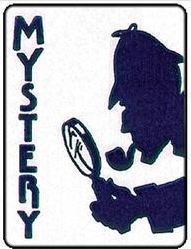 |
| Science Fiction | A science fiction story. Science fiction short stories. | 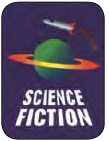 |
| Fantasy | A fantasy story. Fantasy short stories. | 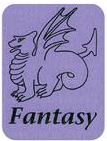 |
| Sports | A sports story. Sports short stories. | 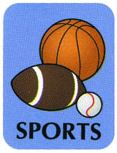 |
| Animals | An animal story. Animal short stories. | 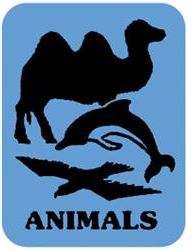 |
500 | Canadian Creator
- Add a 500 note for Canadian creator when applicable (circle C on the IP form), e.g.
500 $aCanadian creator.
- See: Fiction, 500 Use of Canadian Creator.
521 | Target Audience Note
- Do not use this note in original cataloguing; retain if present in derived cataloguing.
586 | Awards
- Enter the official name of the award received upon request.
586 8 $a Governor General's literary award, children's literature (text).
586 8 $a Governor General's literary award, children's literature (illustration).
- Retain 586 notes present in derived records.
- Do not add 586 Awards note to Juvenile sound recordings.
6XX | Subject Headings
- Every juvenile print item or print equivalent in audio format must have at least one subject heading; see also Subject Headings for juvenile subject heading instructions.
650 \0 High interest-low vocabulary books
- This LCSH is used to identify books for the Teen audience that feature highly engaging age-appropriate subject matter at low reading levels for struggling readers. They are designed to help build reading fluency, vocabulary and interest in reading.
- High interest-low vocabulary works are often associated with specific imprints/series, e.g.:
- Orca - Currents
- Saddleback Educational Publishing - Apartment 4A, Carter High Mysteries, Coming Home, Gravel Road, Illustrated Classics & Monarch Jungle
- Enslow - West 44
- Epic Press - EPIC Escape, EPIC Edge & EPIC Extreme
- Formac Lorimer - Lorimer SideStreets
- Lerner Publishing - AI High & Iron Will
- Townsend Press - The Bluford Series & Townsend Library
- Or, are identified by a Collections Librarian.
- This subject heading may also appear in e-book records, but is not used in records for Easy English, children's or adult books.
650 \0 Plot-your-own stories
- This LCSH is used to identify works of fiction in which the reader chooses from several possible options to develop the story. Plot-your-own stories are often associated with specific series, e.g.:
- Choose your own adventure
- Choose your own ever after
- Countdown to danger: choose your own ending!
- You choose!
700 | Added Authors
- Illustrators of all E and J books receive an added entry, if not used as main entry.
- Do not trace illustrators responsible for cover art only.
730 Anonymous Classics
- Trace the following as uniform titles for stories based on these anonymous classics. If author of an adaptation is stated on the work, make personal author the main entry.
- Do not trace 730 if 245/246 begins same as the uniform title.
- Heading must validate.
| Aladdin | Ali Baba |
| Arabian nights | Beauty and the beast |
| Beowulf | Chanticleer and the fox |
| Chicken Licken | Cinderella |
| Gawain and the Green Knight | Gingerbread Boy |
| Hansel and Gretel | House that Jack built |
| Jack and the beanstalk | Kalevala |
| Little red hen | |
| Little Red Riding Hood | Mother Goose |
| Rapunzel | Rumpelstiltskin |
| Sleeping Beauty | Snow White and the seven dwarfs |
| Goldilocks and the three bears | Three little pigs |
Item Entry and Processing
(Juvenile & Teen books in the Hardcover/Permanent Collection)
Barcode Label
- EPL barcode applied as per diagram
- Affix the barcode to the upper left-hand corner of the cover; approx. ½” to 2 ½” from the top of the book and 1” to 1 ½” from the spine
- Affix barcodes on empty space if possible, rather than on printing or illustration. Cover author rather than title if necessary.
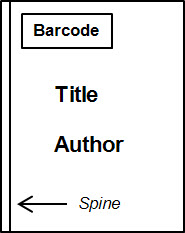
- Manga and World Languages books - barcode is affixed on the top cover when the book's spine rests in left hand, even if that book is printed "back to front"
Spine Labels
- Approx. 1" x 1.25" with call number aligned to left margin; see samples below; affix on spine near bottom edge with first 3 digits clearly visible
- Label font is 11 pt Arial Bold in black; max. number of lines is seven
- DDC numbers with more than 5 digits following the decimal are broken at the decimal
- Use Arabic numerals for Roman volume numbers on spine labels

- For books without spines/narrow spines - the spine label is affixed on the back cover in the lower right corner
- Spine label samples:
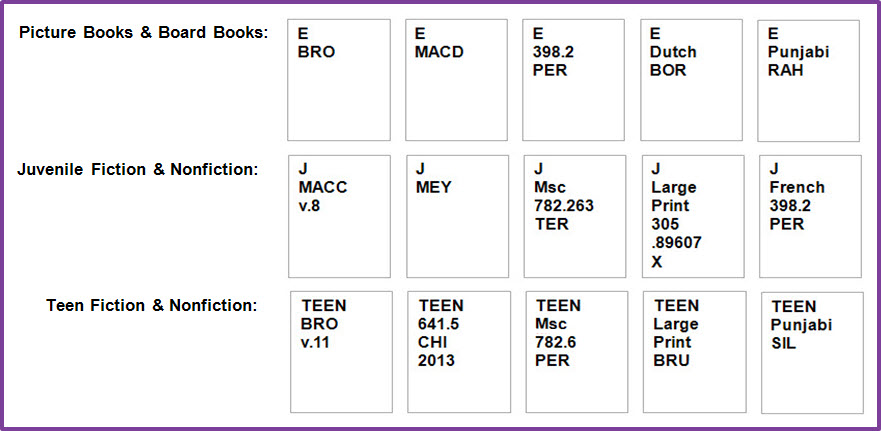
- Label placement examples:

![]()
Bataille des Bouquins
- 1.5” X 0.75” labels; Source: OL1067WX; Onlinelabels.com
- Affix horizontally to the spine above the spine label
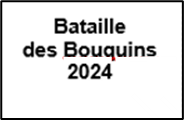
- The round BDB label is affixed to the front cover in addition to the spine label by service point staff
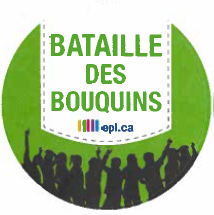
Concept Label
- Affixed horizontally on spine above spine label
- Items in the PBK Collection, including board books are not labelled as Concept

- Source: OL1067WX; Onlinelabels.com
Easy Reader Labels
- Affixed horizontally on spine above spine label (as of Jan. 16/24)

- Source: OL1075TR; Onlinelabels.com
Genre Labels
- Affix on spine below spine label info
- Maximum of one genre label; applied to Juvenile & Teen fiction only, not to books classed as 'E'
| Genre | Label | Source |
| Mystery |  | 55 021 020; Brodart |
| Science Fiction |  | L80-256; Carr McLean |
| Fantasy |  | L80-218C; Carr McLean |
| Sports |  | L80-258C; Carr McLean |
| Animals |  | 55 520 022; Brodart |
Canadian Creator Label
- Affix on spine below call number; do not affix to titles in the STORYTIME collection; if genre label is present, apply above the spine label

- Source: 55 021 023; Brodart
Graphic Novel Collections Label
- Affix on spine above the spine label
- See Print Materials, Graphic Novels, Processing for spine labels and processing instructions.
Oversize Label
- To be applied above the spine label to English language books only
- Applied to books over 30 cm in height; excludes 'E' picture books (including the STORYTIME collection); music scores; and graphic novels
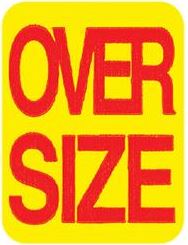
- Source: 55 021 081; Brodart
Contents Label
- Applied to front cover next to barcode if accompanying material is present; location may be shifted to avoid covering text

- Source: OL1067WX; Onlinelabels.com
Hits to Go Label
- To be applied in upper right corner of front cover or below barcode (EPL to supply)
- Affix on empty space if possible; cover author rather than title if necessary

- Source: EPL to supply
EPL Booklist Labels
- Affix to titles on EPL booklists: 100 Great Books; 100 More Great Books; 100 Stories to Experience before High School; ACC Books in Colour (EPL to supply)
- 100 Great Books label is affixed vertically on the spine above the spine label; 100 More Great Books & 100 Stories to Experience before High School are affixed horizontally on the spine; round ACC Books in Colour labels are affixed to the front cover
| Category | Label | Source |
| 100 Great Books |  | EPL to supply |
| 100 More Great Books |  | EPL to supply |
| 100 Stories |  | EPL to supply |
| ACC Books |  | EPL to supply |
YRCA Labels
- 1.5” X 0.75” labels
- Affix horizontally to the spine above the spine label
- Division will be identified at the time of order: Junior (Grades 4-6); Intermediate (Grades 7-9); Senior (Grades 10-12)
| Category | Label | Source |
| Junior YRCA |  | OL1067WX; Onlinelabels.com |
| Intermediate YRCA |  | OL1067WX; Onlinelabels.com |
| Senior YRCA |  | OL1067WX; Onlinelabels.com |
*All labels are covered with label protectors, book tape or are applied to book jackets before lamination
- YRCA winners do not receive award spine labels.
- Some additional hardcover copies may be ordered when the current year’s program is beginning. These copies receive a YRCA label above the spine label and the Home location is set to YRCA/YRCA2.
Label Placement Example
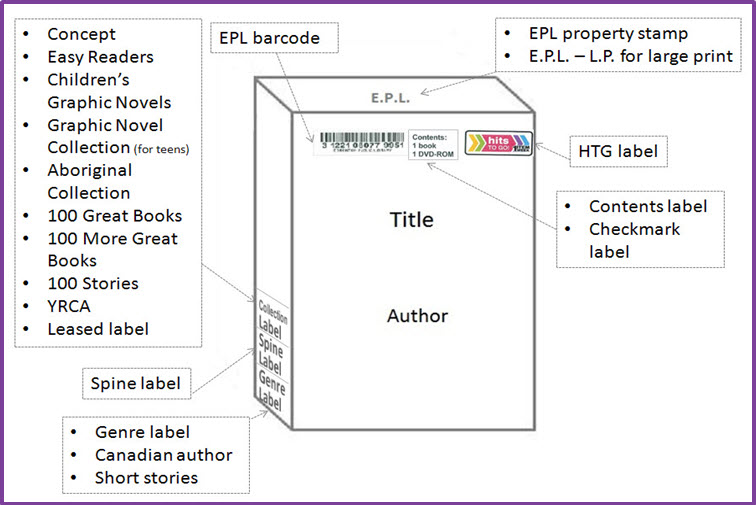
Juvenile Home location hierarchy
- The following list of item Home locations is in hierarchical order:
- Juvenile Bestsellers (JBESTSELLR)
- Storytime (designated Storytime collection and “Big Books”) (STORYTIME)
- Reference (JUVREF)
- Young Readers Choice Award (YRCA)
- Programming kits (PROGRAM)
- Family language kits (JUVFAMLNG)
- World languages (JUVOTHLANG or TEENWORLDL)
- Concept (JUVCONCEPT)
- Graphic novel (JUVGRAPHIC or TEENGRAPHC)
- Easy Reader (JUVICANRD)
- Literacy (ESL)
- Picture book (JUVPIC)
- Large print (JUVLPR, LARGEPRINT, LARGEPRNF, LARGEPRMYS, LARGEPRROM, LARGEPRWES, LARGEPRFAN, LARGEPRSCI)
- Oversize (JUVOVRFIC, JUVOVRNF, TEENFOVR, NFOVER)* Except Music scores - Never Oversize
- Teen fiction (TEENFIC)
- Teen nonfiction (NONFICTION)
- Juvenile nonfiction (JUVNONF)
- Juvenile fiction (JUVFIC)
Last Revised: Nov. 25, 2025